by Laurence Garey
The weekend of 15-17 October 2003, Jerry and Linda Buzzell, and Josette and I
visited Jebel Akhdar in Oman.
We had a very positive time, both on the Saiq Plateau itself, that sits at over
2000m on top of the jebel, and in our visits to Nizwa and its region, in the valley
below the "Green Mountain" that is Jebel Akhdar. I think Jerry and/or I will write
up our experiences more fully a little later, but I thought it worth writing a few
words about one rather "different" aspect of our trip, involving some aviation archaeology,
which is passion of mine.
I have known for a couple of years that there was supposed to be a remnant of
the so-called Jebel Akhdar War of 1957-1958 in the form of a crashed RAF fighter-bomber,
but its exact location remained a mystery to me. This war was conducted by the British
Army and Air Force against "rebels" of the old, conservative, hostile central "Omanis"
on behalf of the more liberal people of the coastal areas, still essentially separate
as "Muscat". Do not blame me for any mis-interpretation of that aspect of history:
that is not my concern today!
Suffice it to say that the RAF was used to bomb some of the "caves", perhaps
harbouring "terrorists" (as we might say these days), using 4-engined Shackleton
bombers flying from Khormaksar (Aden), and single-engine jet de Havilland Venoms,
from both Aden and Sharjah. The main weapons were machine-guns, rockets and 1000
pound bombs. These proved rather ineffective (bombs and rockets do not do a lot
a damage against sheer mountain sides), but there must have been nasty "collateral
damage". Interestingly, during one of our treks, to the tiny village of Al Ain (!)
near the top of the Saiq plateau, we came across a basin shaped piece of heavy steel
casing with a tight screw-thread at one end, which I interpreted as being a piece
of a 1000 pounder.
In 1957 or 1958 a Venom went missing after a raid of "rebel strongholds" near
Saiq village, so we were looking for it that weekend. All the way up the 40km of
track (that varies from good, through bad to very bad) from the valley we saw no
sign of the Venom. At the hotel that has stood on the plateau since a couple of
years ago, and where we stayed, I asked the manager. He said that, yes, he knew
where the crashed plane was. In fact it was only about 3 km from the hotel. The
fact that he called it a helicopter worried me! However, next day we found it, just
by the roadside (there is, in fact, a much more modern wreck, of a Huey helicopter,
at an army base a kilometer or so further on). Of our Venom, only the engine, the
central parts of the wings (with the main wheels still retracted in them), and part
of the fuselage remain. None of these parts carry the RAF serial number, so I could
not find out the precise identity of the plane, but it was certainly a Venom, as
was also attested by the well-preserved engine (a de Havilland Ghost).
There were lots of serial numbers of individual components, which I duly photographed,
and I hope British Aerospace (the company that took over the former de Havillands)
will help me in further identification. However, pencilled on the inside of a torn
wing panel was the number "562". Now, RAF records tell us that a Venom of the British
Forces in the Aden Protectorate, number WR562, crashed on 10 August 1957. I thought
that this could be it! However, the penciled "562" seems not to prove that the Venom
in question was WR562. That aircraft is reported to have crashed in Aden, not Oman.
Sources suggest that our Venom crashed in late August 1958. There was one (serial
WR503) belonging to 8 Squadron, RAF, that is reported to have crashed on Djebel
Dahat on 8 July 1958. Could this, then, be it, I wondered? Could Dahat be a mis-spelling
of Akhdar?
I have managed to obtain some more information from local and European sources,
including from Les Kirkham, now at HCT but formerly in Oman, and who visited the
crash site himself some years ago. He points out that Jebel Dahat is in Yemen, which
figures as 8 Squadron was based at Khormaksar, Aden. However, there is yet another
Venom (WR552) that went down on 30/8/1958! So the search for our Venom's identity
continues. Les even has some old photographs, but they are not with him here! His
old friends in the Oman Historical Association gave some interesting advice. Amongst
other things, one story says that the pilot was strafing goats!
Alongside the wreck is a small stone cairn that I interpreted as the grave of
the pilot, who was said to have been buried there. I have, indeed, had confirmation
that the pilot, Owen Watkinson, was buried under a pile of rocks immediately after
the crash by local people, and later re-interred in the rock ledge that is marked
by the cairn to this day.
I am now trying through the RAF, the National Archives in London, the Ministry
of Defence, and British Aerospace to get a little further with the research. I had
very helpful replies from the National Archives, but I need to go to London to consult
the documents. Closer to home is to get a copy of Colin Richardson's book: Masirah:
Tales of a desert island which contains a report on the crash - the author was a
Venom pilot himself.
So we are making progress.
|
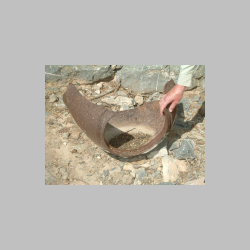
Remains of a bomb in the village of Al Ain, Saiq Plateau, Oman
Photo by Josette Garey
|
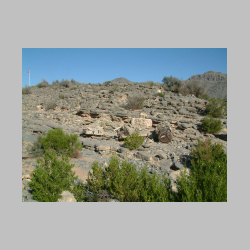
The wreckage site, looking north. Left centre is part of a wing, with the engine
right of centre. To the left of the engine is (presumably) the pilot's grave
Photo by Laurence
|

The grave
Photo by Laurence
|
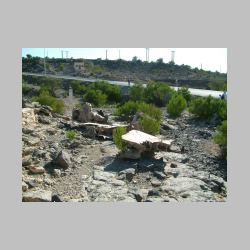
Looking south.
Photo by Laurence
|

The Ghost engine, showing the turbine (rear of engine) on the left and one combustion
chamber. Behind the engine is a wing panel.
Photo by Laurence |
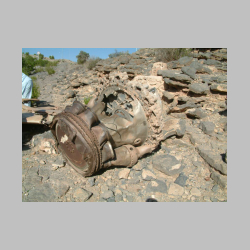
The Ghost.
Photo by Laurence |
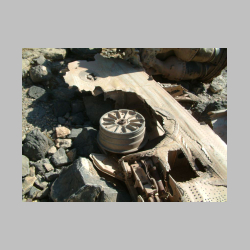
A main wheel still in the wing.
Photo by Laurence |

A hand-written record on hardness testing on a wing component.
Photo by Laurence |
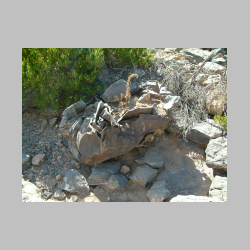
A crumpled (?nose) section, with a flower growing in it!
Photo by Laurence |
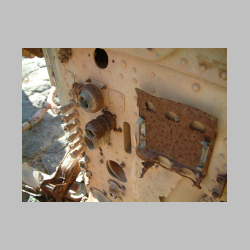
Electrical connectors at the wing root.
Photo by Laurence |
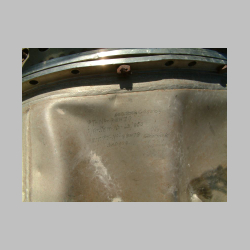
Hand-written parts numbers on the engine casing: ends with "DHE958" (i.e. de Havilland
Engines?)
Photo by Laurence |
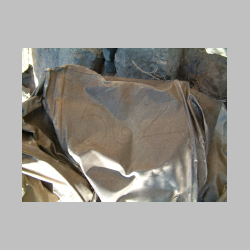
The enigmatic "562" on the wing skin. Maybe RAF serial WR562.
Photo by Laurence |

How the Ghost fits in Swiss Air Force Museum |
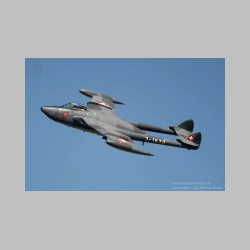
In all its glory - still flying in Switzerland!
Photo by Markus Keller |
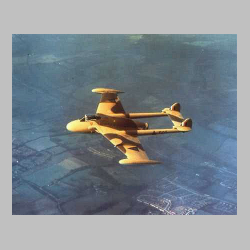
Venom of the Iraq Air Force in desert colours, much like ours |
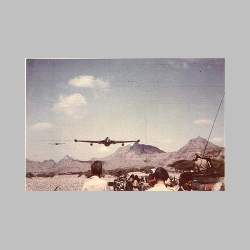
A pair of Venoms of 8 Squadron flying low over the desert |
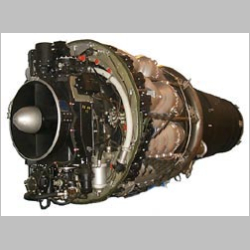
Ghost engine |

Ghost engine |
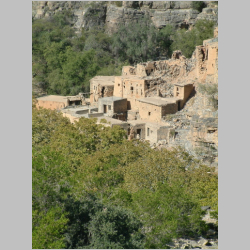
The ruined village of Wadi Bani Habib, a "rebel stronghold" of the Jebel Akhdar
War of 1957/1958. Seen from the village of Saiq, another "terrorist hotspot",
as we might call it now. This is the region of "Beercan" and "Colin", the codenames
used by the British Army (SAS) during the assault on the jebel (see the website
given below). Could the ruins in the centre-right be the result of a bomb?
Photo by Laurence |

A "cave" at Wabi Bin Habib, such as those mentioned in the history of the war.
The RAF found it easy to knock down mud-brick houses, but the caves proved more
difficult!
Photo by Laurence |

A detail of the ruins
Photo by Laurence |

Laurence at work at the Venom crash site.
Photo by Josette Garey |
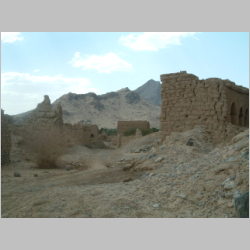
The ruins of Tanuf, another casualty of the Jebel Akhdar War.
Photo by Josette Garey |

Another view of the ruins of Tanuf.
Photo by Josette Garey |
Other interesting links
Jebel Akhdar war:
Venom:
Ghost: